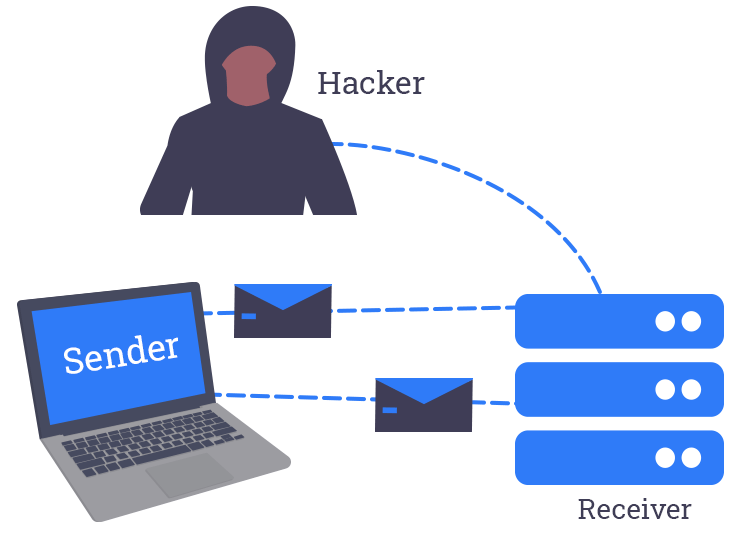
- #Bitmessage spoofing install
- #Bitmessage spoofing verification
- #Bitmessage spoofing password
- #Bitmessage spoofing free
- #Bitmessage spoofing torrent
address (key) and requires entering the passphrase ("chan name") only: Add Chan / Create New Chan. The simpler method for joining in omits the hard to memorize BM-2.
#Bitmessage spoofing verification
address (for verification against typos in the chan name). To join an existing Chan, you must enter a passphrase (the chan name, essentially) and optionally the chan's BM-2. A Passphrase must be entered and the address is being generated for a (new or old) chan.
#Bitmessage spoofing password
Sometimes called Chan (short for channel) because they usually focus on a subject which also is the password for the deterministic address.Ī Chan (or a Distributed Mailing List) can be joined or created by hitting "Join/Create Chan" in the file menu. A python script (published on UBF) will post binaries as encoded bitmessages much like method 1 but offers additional features.Ī Mailing List without the requirement of a central "authority". Torrents might raise privacy issues, so the third way is to embed binaries or pictures employing BM API client, currently of version 1.2.8. The magnet link can be shared with the intended recipient without using base64. You need to have python2-bencode AUR installed in order to make this script work. Paramstr = urllib.urlencode(params) + announcestr Hashcontents = bencode.bencode(metadata)ĭigest = hashlib.sha1(hashcontents).digest()įor announce in metadata:Īnnouncestr += '&' + urllib.urlencode() ~/.scripts/createMagnetLink.py !/usr/bin/python2
#Bitmessage spoofing torrent
You can now share this torrent file using the base64 method described above, or you can use the following script to convert it into a magnet ( source blogpost): To use this method, first create the torrent with all the files you wish to share using your favorite torrent application.

You need not list the torrent on a public torrent site for this to work. You can send the passphrase used to encrypt the file over bitmessage.Īn extreme method, especially if you wish to wish larger files, is to create a magnet link or a torrent file and use that to share your data. Of course, if the file contains anything sensitive, it may be a good idea to use PGP or some other program to encrypt your file. Hence it is advised to upload your file to a cloud-based storage provider (ala dropbox or box) and send the link over using bitmessage. This method, however, is neither in the interests of bitmessage (as it increases the length of the message unnaturally) nor is it very elegant. The concatenated text can be copied to a text file by the recipient and the following command can be used to reconvert the file back to its original state: Alternatively, 3 more options are available: One is to convert your files using base64 and concatenating them to the end of your bitmessage itself. jar (texts readable in GUI in lowest jar-compression setting)) and pictures (from local files or weblinks via clipboard). This is an echo server and will send your message back to you if you have configured everything correctly.Īttachments are not possible for the moment in mainline bitmessage, but the wiki offers links to API tools which allow to send binaries (.zip. To test if bitmessage is working properly for you or not, you can send a test message to BM-orkCbppXWSqPpAxnz6jnfTZ2djb5pJKDb. The addresses you have are, however, in Bitmessage format. Using bitmessage is the same as using an email client. Next to Server hostname enter "localhost" and next to Port enter "9050" (If using the Tor browser bundle enter "9150").Navigate to Settings > Network Settings and select SOCKS5 from the Type drop down under the Proxy server / Tor section.The same steps apply as above, except that you would need to do the following (ideally before you set up your first identity): These will be useful if you need to re-make your address for any reason (Currently the default address version is 4 and stream number 1 will be fine) Remember the address version number and the stream number.A random number is better for security and a passphrase is better for convenience (you can recreate your identity more easily with a passphrase than with a random number) You can use either a passphrase or a random number as the basis for the generation of your address.
#Bitmessage spoofing free
Since bitmessage is built to be used with different (ideally disposable) addresses, feel free to create more than one address (for instance this user created four addresses) Hit the New button and create a few new addresses.

#Bitmessage spoofing install
For using the given python script to create magnet links, install the package python2-bencode AUR.Īfter launching bitmessage (the name of the bitmessage main python2 script is pybitmessage) for the first time, disregard any popups and: In order to use it with Tor, install tor from the official repositories. Install pybitmessage AUR or pybitmessage-git AURfrom the AUR.


 0 kommentar(er)
0 kommentar(er)
